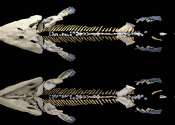Evidence of TB-like infection found in 245-million-year-old marine reptile
A team of researchers from Poland and the U.S. has found possible evidence of tuberculosis in a 245-million-year-old marine reptile. In their paper published in the journal Royal Society Open Science, the group describes ...









